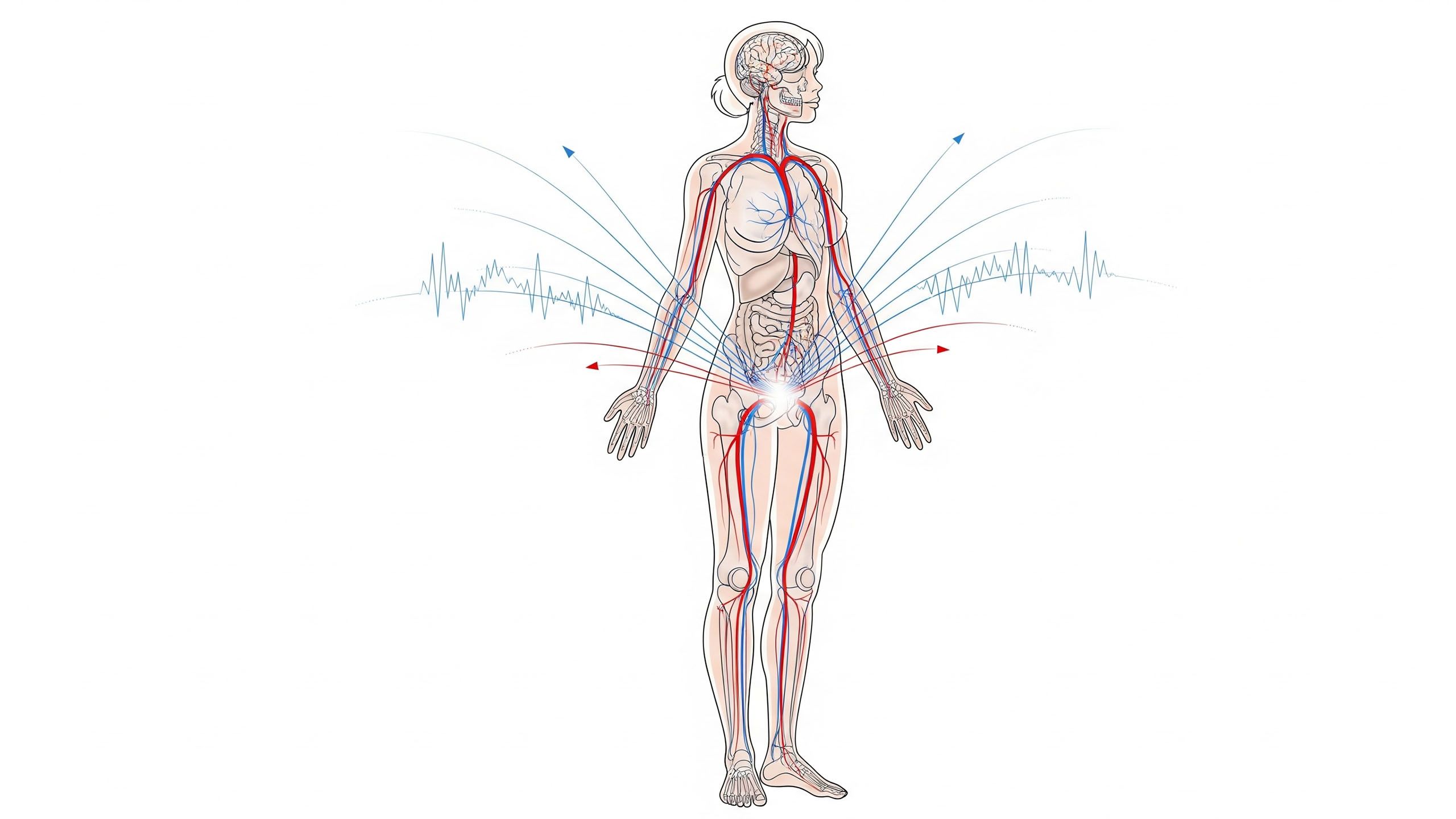The Art of Self-Touch: Exploring Your Own Body with Curiosity

Self-touch, often simply referred to as masturbation, is one of the most direct ways to understand your own body. While many view it purely as a physical activity, it can also be a rich practice of exploration, curiosity, and personal awareness. By learning how your body responds to different forms of touch, you cultivate an intimate knowledge of what feels pleasurable, soothing, or stimulating, fostering a deeper sense of connection with yourself.
This article explores self-touch as an art form, offering guidance for cultivating awareness, experimenting with techniques, and integrating it into your personal wellness routine—all in a safe and mindful manner.
Why Explore Self-Touch?
Understanding your own body is essential to sexual health and overall well-being. Self-touch:
-
Helps you recognize and articulate your preferences.
-
Increases awareness of subtle physical responses.
-
Encourages relaxation and stress relief.
-
Supports a sense of autonomy and comfort with your own sexuality.
Exploration is not about performance or achieving a specific outcome. Instead, it is a process of learning, noticing, and appreciating your body’s responses. Each individual is unique, and what feels pleasurable for one person may feel entirely different for another. The key is attention, curiosity, and willingness to notice how your body reacts.
Creating the Right Environment
Before engaging in self-touch, consider your surroundings. A comfortable and safe environment can enhance your experience and allow you to focus fully on sensation. Here are some tips:
-
Privacy: Choose a space where you will not be interrupted. Feeling secure and unobserved is essential to relaxation.
-
Lighting: Soft, warm lighting can help you feel at ease. Some individuals prefer darkness, while others enjoy gentle illumination.
-
Temperature: Ensure the room is warm enough to avoid tension caused by cold.
-
Sound: Consider ambient music, white noise, or silence—whatever supports your focus on your body.
-
Comfort: Soft bedding, a cozy chair, or a favorite blanket can create a sense of comfort and allow your body to relax fully.
Creating this environment is about setting the stage for presence and attentiveness. It signals to your body and mind that this is a moment for personal exploration.
Starting with Observation
Self-touch begins with noticing. Before applying any stimulation, spend a few minutes observing your body. This can include:
-
Scanning your skin from head to toe, noticing areas of tension, warmth, or sensitivity.
-
Paying attention to breathing and heartbeat, which may shift as you focus inward.
-
Gently touching different areas to become familiar with textures and responsiveness.
This phase is about awareness, not goal-oriented action. By observing without expectation, you prepare yourself to understand the full spectrum of sensation.
Exploring Sensations
When you begin to touch, consider experimenting with a range of techniques:
-
Light strokes: Feather-light or gentle circular motions can reveal highly sensitive areas.
-
Firmer pressure: Applying more pressure can create deep, sustained sensations.
-
Varied rhythm: Alternating pace or changing pressure can produce different responses.
-
Focused attention: Concentrate on one area at a time to notice subtle variations in sensation.
Don’t limit yourself to genital stimulation. Many areas of the body respond to touch, including:
-
Breasts and nipples
-
Inner thighs
-
Neck and ears
-
Lower back
-
Hands and fingertips
Notice how each area responds. Some may produce relaxation, others tingling or warmth, and some may simply feel neutral. Observing these responses expands your understanding of your body’s landscape of pleasure.
Body Areas, Techniques, and Sensations
| Body Area | Suggested Technique | Typical Sensations |
|---|---|---|
| Breasts/Nipples | Gentle stroking, circular motions, light pinching | Warmth, tingling, sensitivity |
| Inner Thighs | Soft strokes, tracing patterns | Tingling, gentle excitement, relaxation |
| Neck & Ears | Light tapping, soft tracing, circular motions | Shivers, warmth, heightened awareness |
| Hands & Fingers | Gentle kneading, stroking, tapping | Tingling, relaxation, sensitivity |
| Lower Back | Light pressure, circular motions, gentle scratching | Warmth, relaxation, gentle excitement |
Mindful Touch Practices
Mindfulness can be a powerful addition to self-touch. Here are some practical ways to incorporate presence into your exploration:
-
Slow Exploration: Move deliberately, paying attention to every sensation. Avoid rushing.
-
Breath Awareness: Coordinate touch with breathing. Inhale as you explore, exhale as you release tension.
-
Body Scanning: Periodically pause to note areas of heightened or diminished sensation.
-
Nonjudgmental Awareness: Accept whatever you notice without labeling it as “good” or “bad.”
Mindful self-touch deepens your connection with your body and encourages a richer sensory experience.
Using Tools to Expand Sensation
Some people enjoy incorporating tools into their practice. These can provide new textures and experiences. Examples include:
-
Massage wands or vibrators
-
Feathers or soft fabrics
-
Lubricants for glide and comfort
If using tools, ensure they are safe, clean, and comfortable. Focus on how they modify your sensations, rather than following any external standard. Experimenting with tools can highlight preferences you might not discover through touch alone.
Paying Attention to Response
As you explore, it’s important to listen to your body’s signals:
-
Muscle tension: Notice where muscles tighten or relax in response to touch.
-
Breathing changes: Shifts in breath often accompany heightened sensation.
-
Temperature and warmth: Blood flow changes can create warmth or tingling in different areas.
-
Emotional reactions: Sensations may evoke feelings ranging from comfort to excitement.
Recording or mentally noting these responses can help you recognize patterns and refine your self-touch practice over time.
Experimenting with Different Approaches
Curiosity-driven exploration benefits from variety. Consider:
-
Single-area focus: Spend several minutes exploring one region to understand its responses fully.
-
Multiple-area exploration: Alternate between areas to compare sensations and discover new patterns.
-
Combination techniques: Apply different pressures, strokes, or rhythms simultaneously.
Experimentation is about discovery, not performance. By remaining open to what your body enjoys, you cultivate a nuanced understanding of sensation.
Incorporating Self-Touch into Daily Life
Self-touch can be part of a personal wellness routine, offering stress relief, comfort, and self-knowledge. Tips for integration include:
-
Setting aside dedicated time without distractions.
-
Using brief sessions for relaxation, or longer sessions for in-depth exploration.
-
Pairing self-touch with other self-care practices, such as stretching, warm baths, or meditation.
Consistency allows you to build awareness and deepen your connection to your body, creating a practice that supports both pleasure and self-understanding.
Understanding Emotional Connections
Self-touch is not purely physical; it can also influence emotional well-being:
-
Self-acceptance: Learning your preferences helps foster comfort and appreciation for your body.
-
Mood enhancement: Engaging in pleasurable touch releases feel-good chemicals, promoting relaxation.
-
Stress reduction: Focused attention on sensation can reduce tension and increase mindfulness.
Recognizing these emotional benefits reinforces that self-touch is a holistic practice, impacting both body and mind.
Exploring Boundaries and Comfort
Exploration is most effective when conducted within your personal comfort zone. Pay attention to:
-
Areas that feel safe and inviting versus those that feel uncomfortable.
-
Adjusting pressure, duration, or technique based on your responses.
-
Noticing when sensations become overwhelming and allowing yourself to pause.
Respecting your own boundaries ensures a positive and enjoyable experience, allowing exploration to be both safe and insightful.
Common Misconceptions
Self-touch is sometimes misunderstood. Here are a few points to keep in mind:
-
It is a normal and healthy practice for people of all genders and ages.
-
Pleasure does not need to lead to orgasm to be meaningful.
-
Exploring your body does not conflict with intimacy with partners; it can enhance it by improving awareness and communication.
Recognizing these truths allows you to approach self-touch with confidence and curiosity.
Advanced Exploration Techniques
For those interested in further experimentation:
-
Sensory variation: Try alternating temperatures, textures, or pressures to observe different responses.
-
Visualization: Imagine different sensations or scenarios to enhance awareness.
-
Progressive focus: Move slowly from broader touch to finer, more detailed stimulation.
-
Feedback observation: Note how touch affects other areas, such as posture or breathing, for a holistic understanding.
These techniques deepen the sensory experience and allow for more intricate exploration of what your body enjoys.
Conclusion
The art of self-touch is a journey of curiosity, patience, and attention. By exploring your body with care, you can learn about what brings comfort, pleasure, and awareness. Self-touch is not merely a physical act; it is a way to connect with your body, notice subtle signals, and appreciate your own sensations.
Through mindful exploration, experimentation, and observation, you cultivate a richer understanding of your body and its responses. This practice supports both physical and emotional well-being, allowing you to approach intimacy and pleasure with confidence and insight.
Self-touch, when approached with curiosity and openness, becomes an empowering tool for self-discovery and personal enjoyment—one touch at a time.
Disclaimer: The articles and information provided by the Vagina Institute are for informational and educational purposes only. This content is not intended to be a substitute for professional medical advice, diagnosis, or treatment. Always seek the advice of your physician or another qualified health provider with any questions you may have regarding a medical condition.


 English
English  Deutsch
Deutsch  Español
Español  Français
Français 




